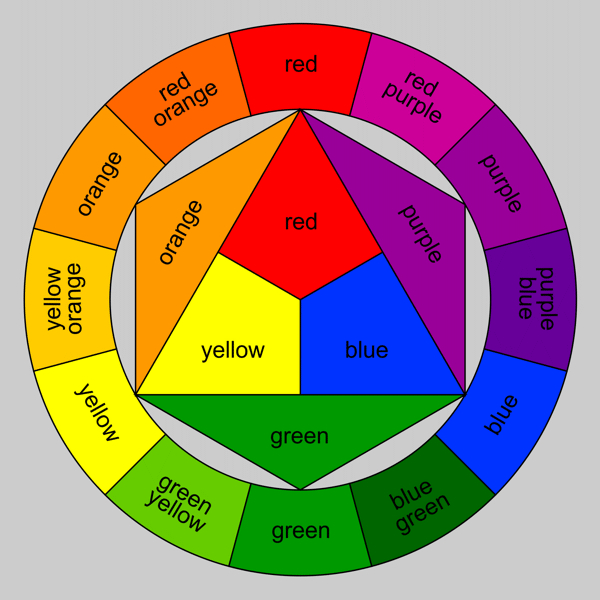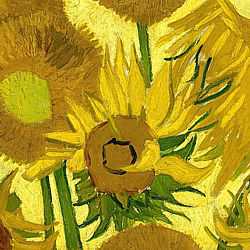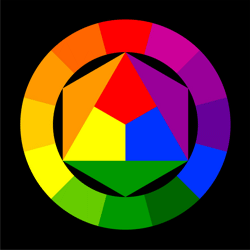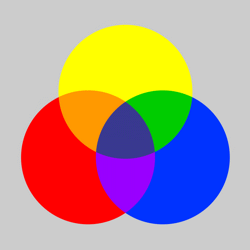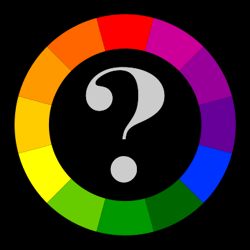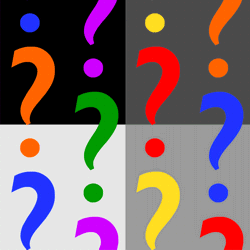Color Terms for Art and Design - 1
A knowledge of Color Terms helps us to understand how color is used in art and design. It also gives us the vocabulary to help express our feelings about an artwork or design.
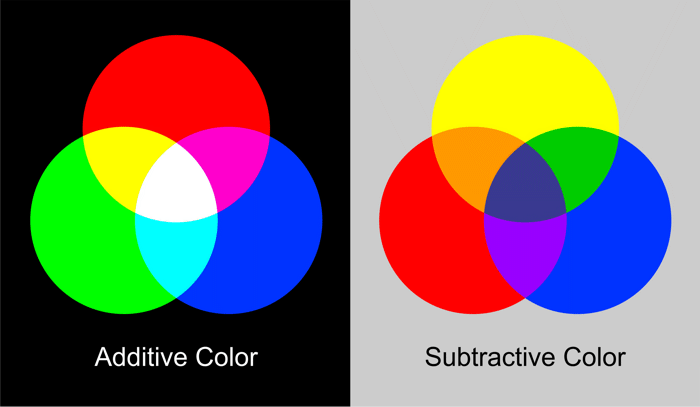
There are two basic color models: Additive and Subtractive Color
-
Additive Color involves the mixing of colored light. The colors on a television screen are a good example of this. Additive primary colors are red, green and blue.
-
Subtractive Color involves the mixing of colored paints, pigments, inks and dyes. The traditional subtractive primary colors are red, yellow and blue.
Note: In this lesson we are examining the terms used to describe Subtractive Color.

The spectrum is the colors of the rainbow arranged in their natural order: Red - Orange - Yellow - Green - Blue - Indigo - Violet.
-
The mnemonic for remembering the order of the colors in the spectrum is is ROY G BIV.
THE COLOR WHEEL
Click on the image for an outline of the color wheel to print and color.
A hue is one of the colors of the spectrum.
-
Hues have a circular order as illustrated by the color wheel.
-
The Color Wheel is a useful device to help us explain the relationships between Primary, Secondary and Tertiary colors.
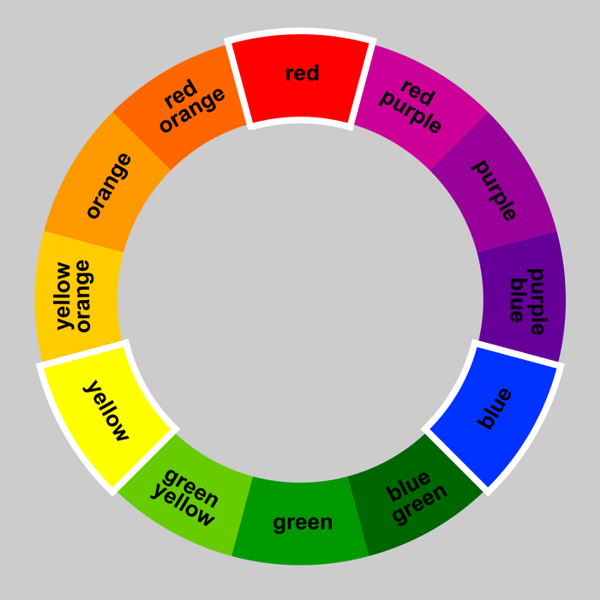
Primary colors are Red, Yellow and Blue.
-
Primary colors are the three basic colors that are used to mix all hues.
-
You cannot mix two colors together to make a primary color.
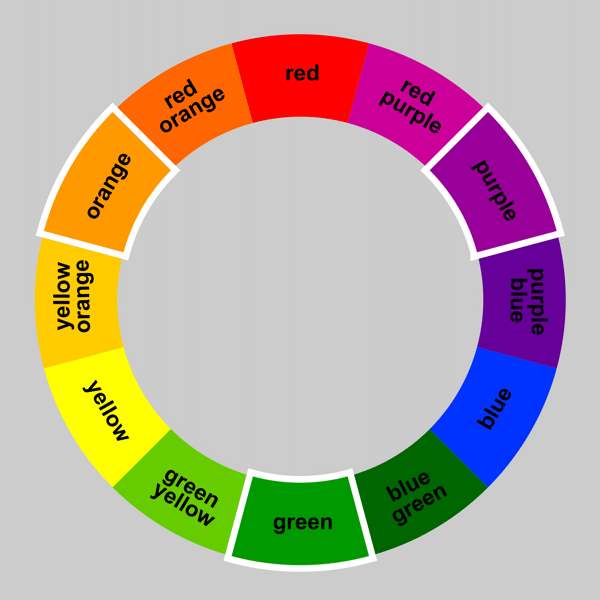
Secondary colors are Orange, Green and Purple.
-
Secondary colors are achieved by mixing two primary colors together.
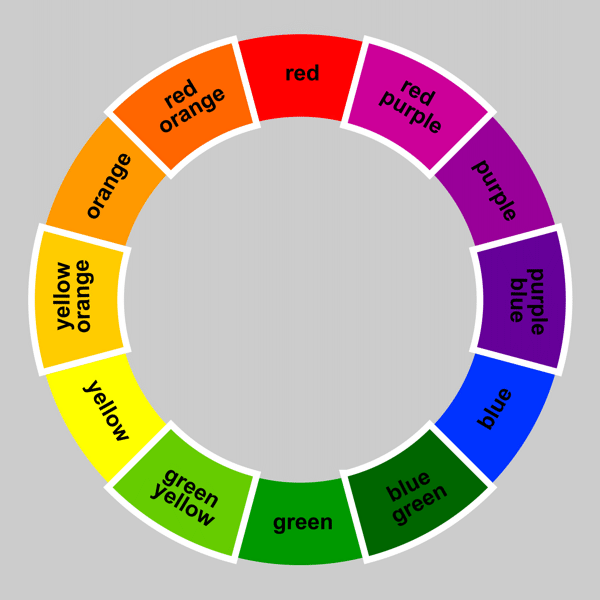
Tertiary colors are more subtle hues that are achieved by mixing a primary and a secondary color which are adjacent to one another on the color wheel.
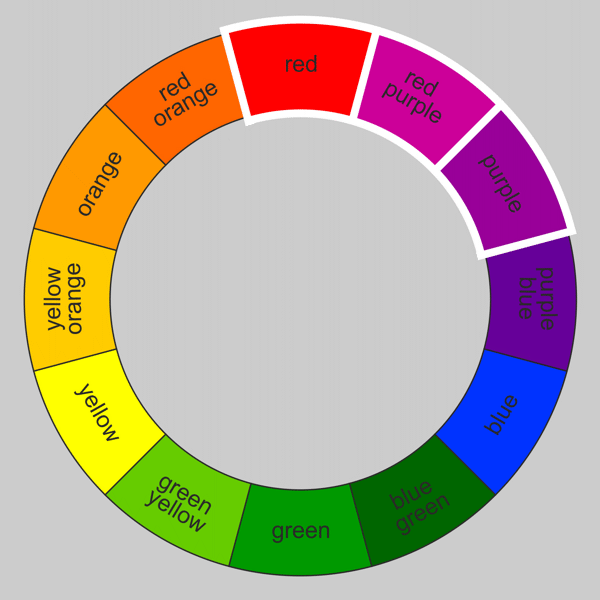
Analogous colors sit next to one another on the color wheel.
-
Analagous colors are in harmony with one another.
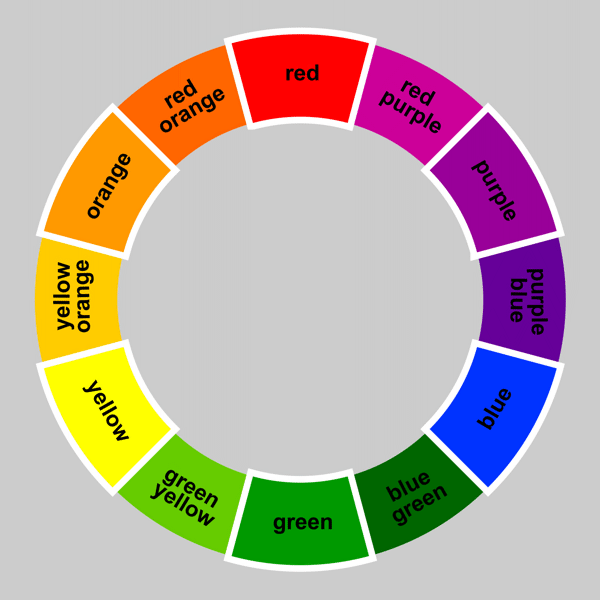
Opposite colors are diagonally opposite one another on the color wheel.
-
They are sometimes called Complementary Colors.
-
Opposite colors create the maximum contrast with one another.
-
You can work out the opposite color to any primary color by taking the other two primaries and mixing them together.
-
The result will be its opposite or ‘complementary’ color.

